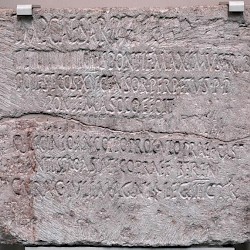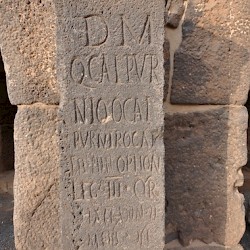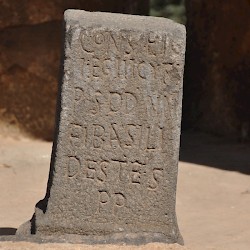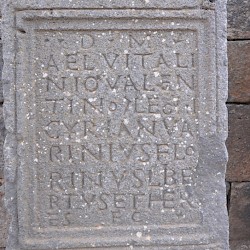Legio III Cyrenaica
Legio III Cyrenaica: one of the Roman legions. Its name means "the legion from Cyrenaica".
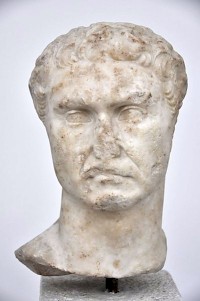
The origins of this unit are unclear, but it is probable that it was founded by either Lepidus or Mark Antony, two members of the Second Triumvirate that ruled the Roman between 43 and 31 BCE. This assumption is based on the fact that until 36, Lepidus was master of Cyrenaica, and after 36, Mark Antony. However, it is also possible that the legion has another origin and received its name after 30 BCE, when it was certainly active in Egypt and may have been sent to Cyrenaica.
Whatever the origins of the Third legion, the emperor Augustus used it to occupy Egypt, which he had annexed in 30. Here, it stayed for a century and a half, and it comes as no surprise that the soldiers of the legion started to venerate an Egyptian god, Ammon. Originally, it was stationed in Upper Egypt (at Thebes?), where the presence of soldiers of III Cyrenaica is attested at Berenice and near the stone quarries in the Thebaid. However, an inscription from 35 CE shows that by then, the Third had been transferred to Alexandria, where it shared its base with XXII Deiotariana. It is likely that the transfer took place in the last years of Augustus, perhaps between 7 and 9.
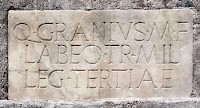
It is likely that (subunits of) III Cyrenaica took part in the Roman attack on Arabia Felix (Yemen) in 26-25 BCE. This campaign, commanded by the prefect of Egypt, Aelius Gallus, was very difficult. Even worse, during the absence of the Roman garrison, the Nubian kingdom of Meroe attacked Upper Egypt. In 24, the Romans retaliated. Commanded by Gaius Petronius, the legions marched upstream along the Nile and reached Napata, the ancient northern capital of Nubia. Although their presence is not attested, soldiers of III Cyrenaica must have taken part in this campaign. After this, the frontier between Nubia and the Roman empire became more quiet.

However, Egypt was not always peaceful. Sometimes, the legions had to suppress violence among the ethnic groups living in the city: Greeks, Egyptians, and Jews. (A description of one outburst of ethnic violence can be found here.) On other occasions, subunits were sent abroad. It is possible that one of them was sent to Tongeren in Gallia Belgica during the reign of Caligula, which may have been part of the army he wanted to use to invade Britain. Another subunit took part in the campaign against the Parthian empire of Domitius Corbulo in 63.
During the Jewish war of 66-70, the Third and Twenty-Second legions fought against the Jews of Alexandria, and in 69, when civil war had broken out between several Roman generals, they were among the first supporters of the new emperor Vespasian. A subunit of III Cyrenaica took part in the siege of Jerusalem in 70.
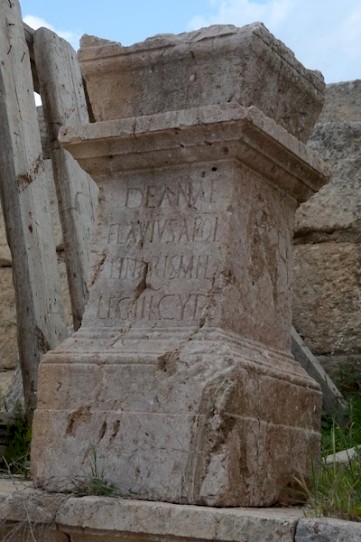
In 106, it was transferred to the new province of Arabia Petraea, which was annexed by the emperor Trajan. Its base was at Bosra (in the south of what is now called Syria). Later, however, it returned to Egypt, where it is mentioned together with XXII Deiotariana in 119. It is probable that this relocation had something to do with the emperor Trajan's war against the Parthians, and/or the rebellion of the Jews of Alexandria. However, the legion returned to Arabia after 125. Its successor at Alexandria was II Traiana Fortis.
Between 132 and 136, subunits of this legion fought against the Jews when they revolted under Simon ben Kosiba (more). But this was exceptional, because the region was usually quiet. Therefore, soldiers of III Cyrenaica could be send to other parts of the Roman empire. During the reign of Antoninus Pius, they were stationed in Hegra, and subunits fought in Mauretania against the Moors. Later, subunits of the Third took part in Lucius Verus' campaign against the Parthians (162-166). In 175, it sided with Avidius Cassius, a Roman general who revolted against Marcus Aurelius, but was killed by his own officers.
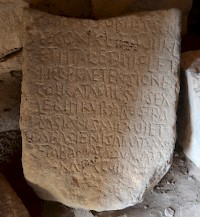
During the civil war following the death of the emperor Commodus on the last day of 192, III Cyrenaica sided with the eastern pretender Pescennius Niger. This man was defeated by Lucius Septimius Severus (194), who immediately invaded Mesopotamia to fight against the Parthians (195 and 197-198). It is possible that the Third legion took part in these campaigns. It was certainly present when Severus' son Caracalla launched a new Parthian campaign (215-217), and it may have taken part in the war of Severus Alexander against the Sasanian Persians, which had subdued the Parthians and were to be Rome's most dangerous enemy in Late Antiquity.
In 260, the Sasanians took the Roman emperor Valerian captive, and several Roman provinces in the east became independent under Odaenathus of Palmyra (262-267) and his wife Zenobia (267-272). The new Palmyrene empire took over the Roman forces and successfully attacked the Persians in Mesopotamia. III Cyrenaica took part in this war. In 273, soldiers of this unit (and four other legions) were involved in road building activity in Jordan, as is attested in an inscription from Qasr el-Azraq. When the emperor Aurelian reconquered Palmyra, the eastern frontier was reorganized and a second legion was added to the garrison of Arabia: IIII Martia.
The later history of this unit is unclear, but the third Cyrenaican legion was still at Bosra at the beginning of the fifth century.
The emblem of III Cyrenaica is not known.
Related
- R. Broulet, "Estampiles de la IIIe légion Cyrénaique à Bostra", in: Berytus 32 (1984) 175-179
- P.-L. Gatier, "La Legio III Cyrenaica et l'Arabie", in: Yann Le Bohec, Les légions de Rome sous le Haut-Empire (2000 Lyon) 341-349
- A. Kindler, "Was there a detachment of the Third Legion Cyrenaica at Neapolis in 251-253?" in: Israeli Numismatic Journal 4 (1980) 56-58
- J. Kramer, "Die Wiener Liste von Soldaten der III. und XXII. Legion (P. Vindob. L2)" in: Zeitschrift für Papyrologie und Epigraphik 97 (1993) 147-158
- C. Wolff, "La legio III Cyrenaica au Ier siècle", in: Yann Le Bohec, Les légions de Rome sous le Haut-Empire (2000 Lyon) 339-340
- article by Emil Ritterling.
